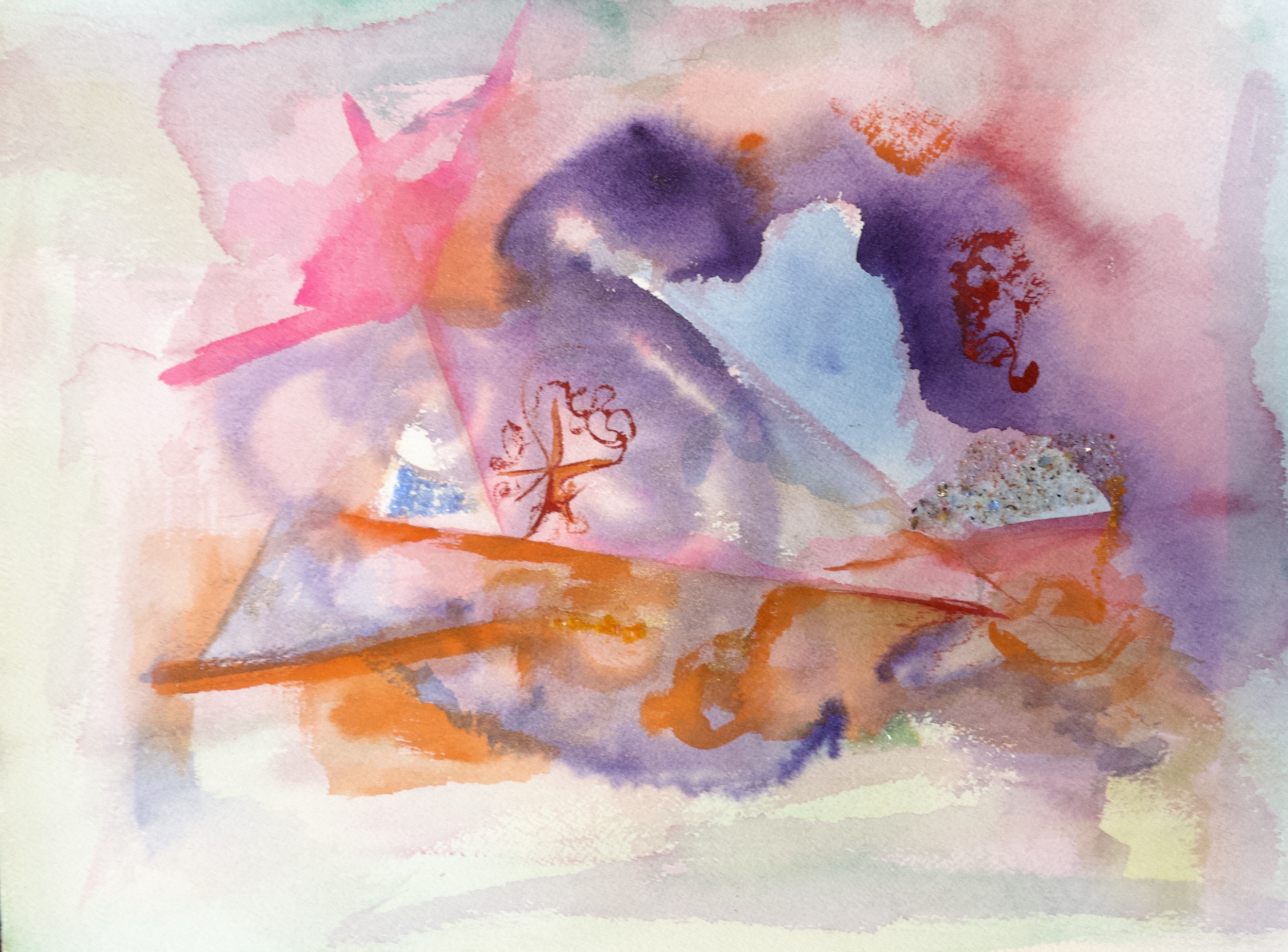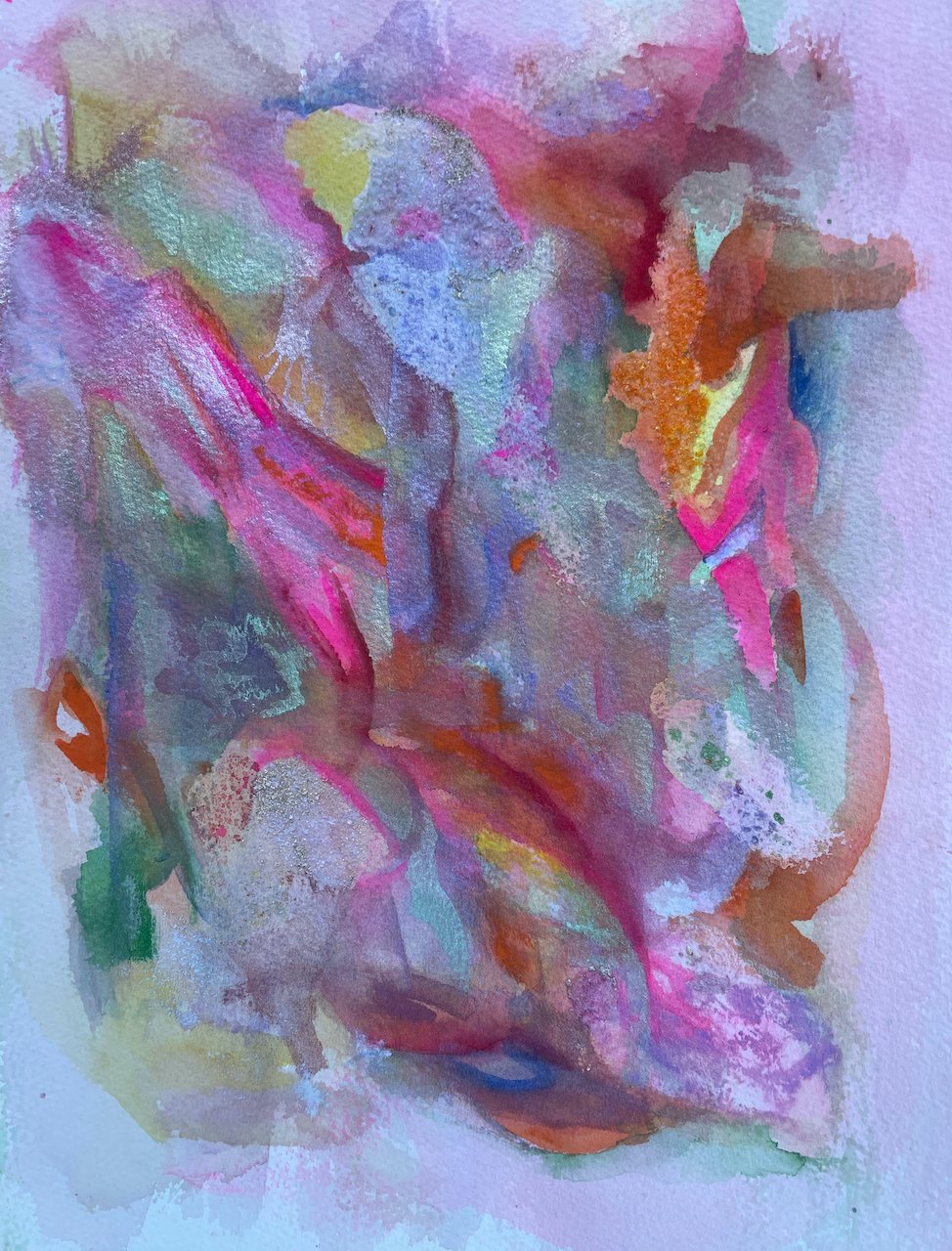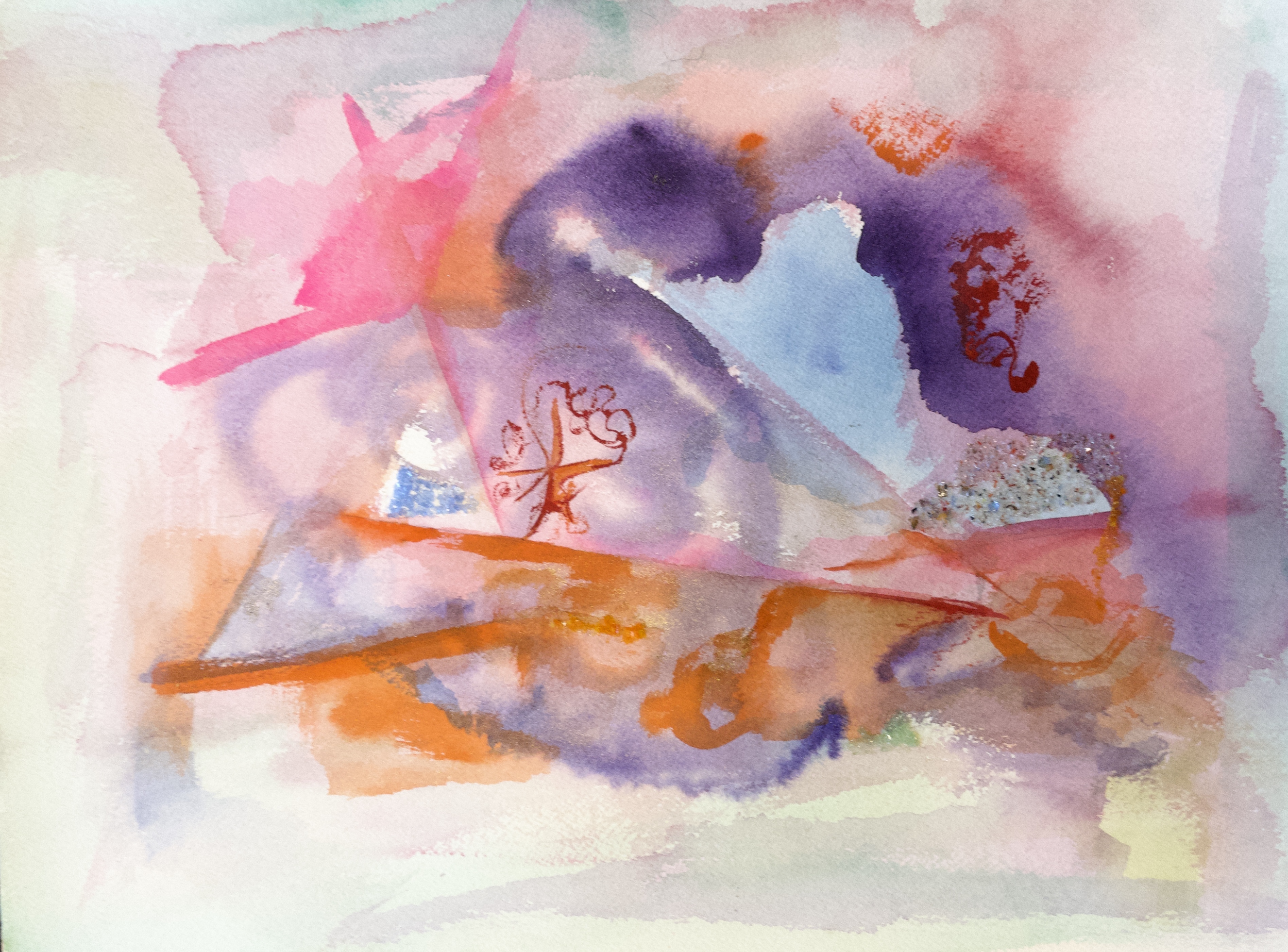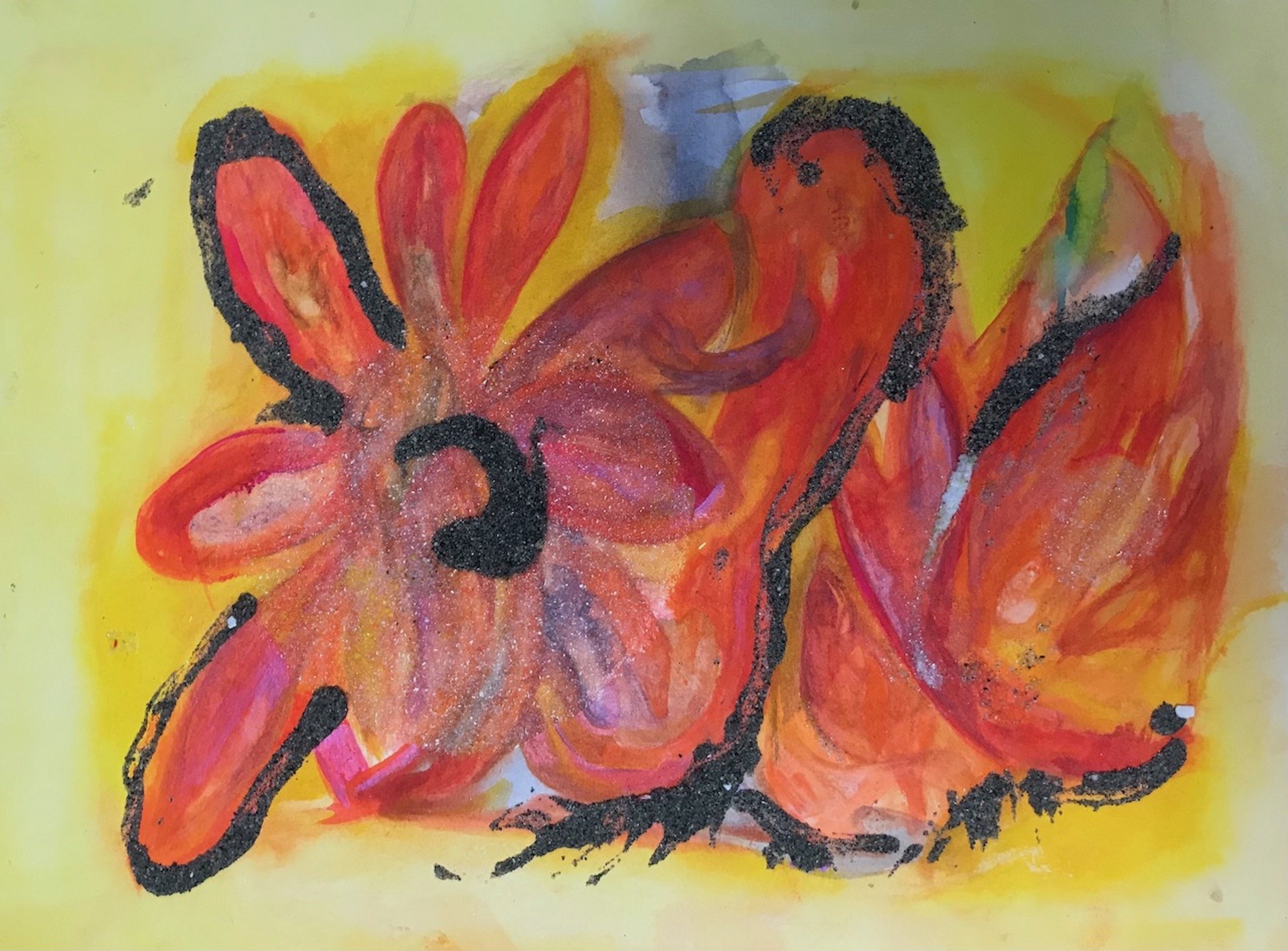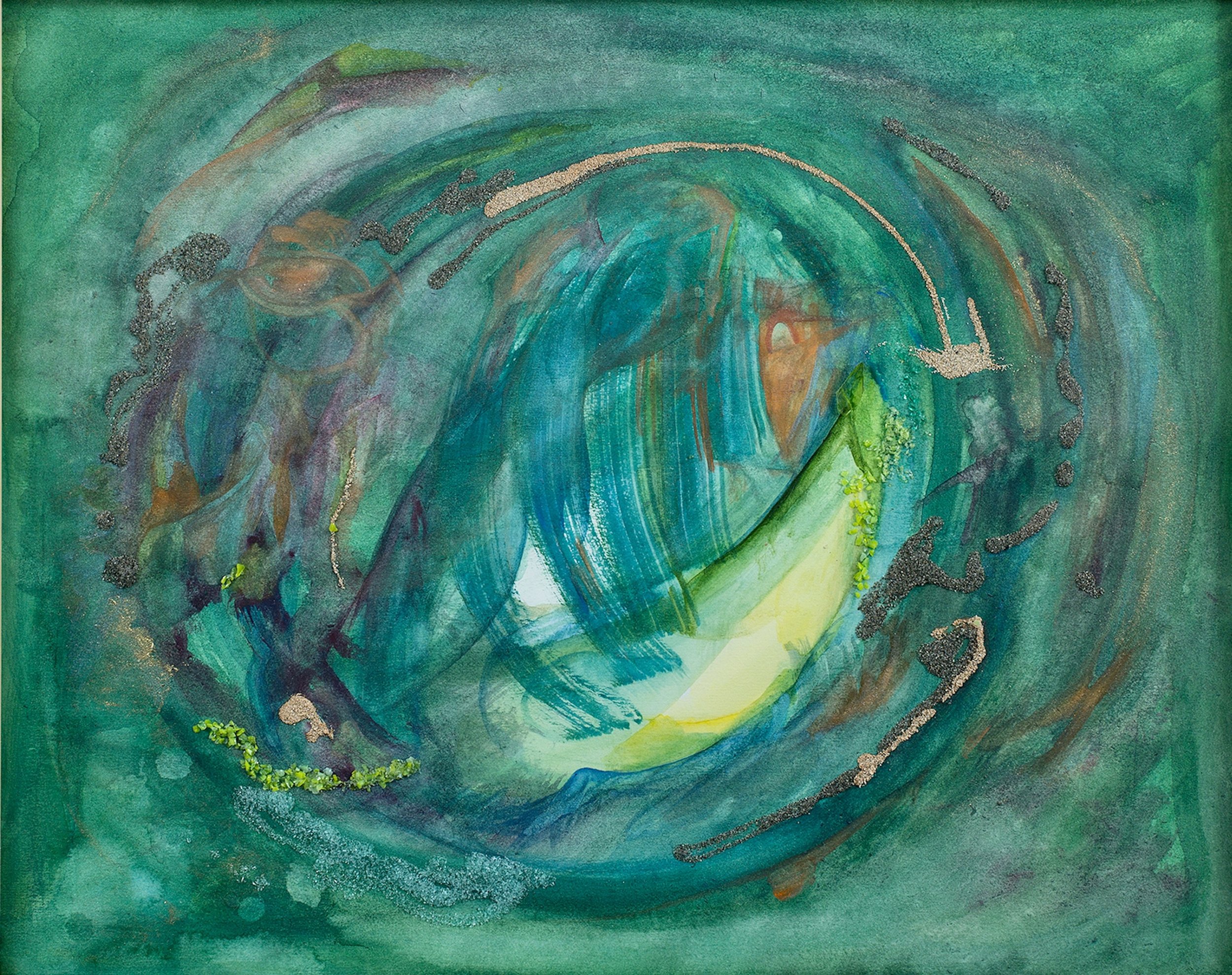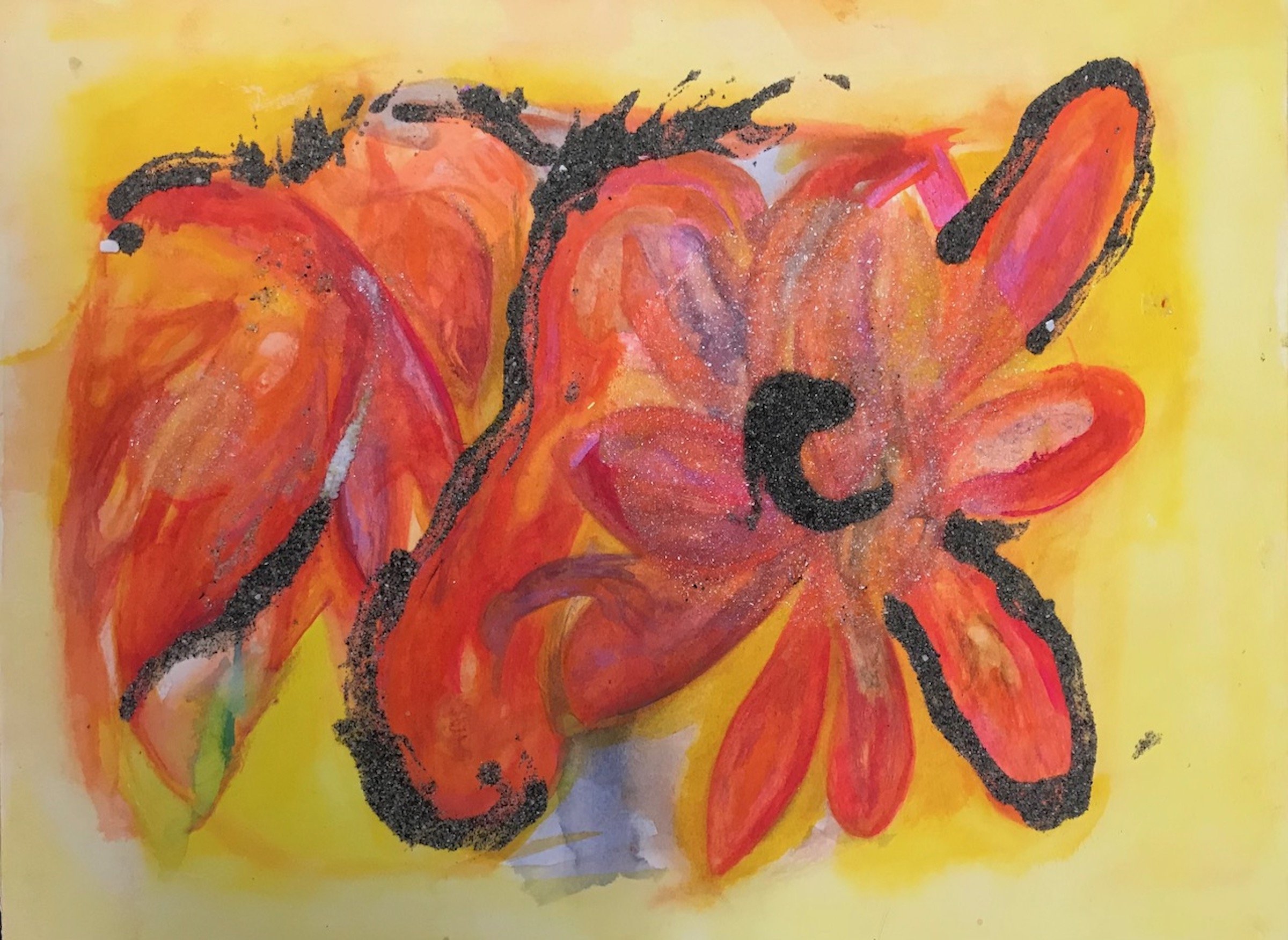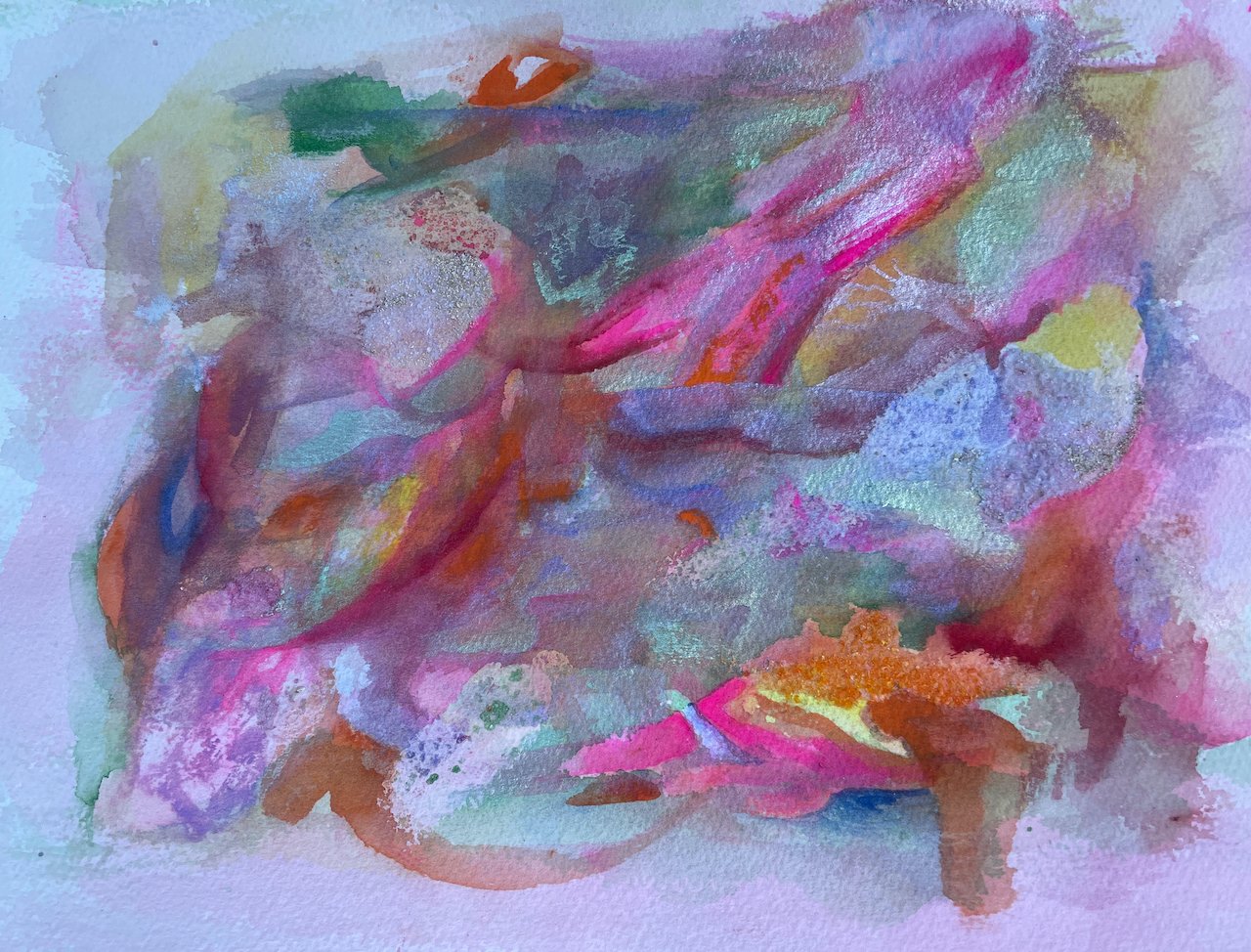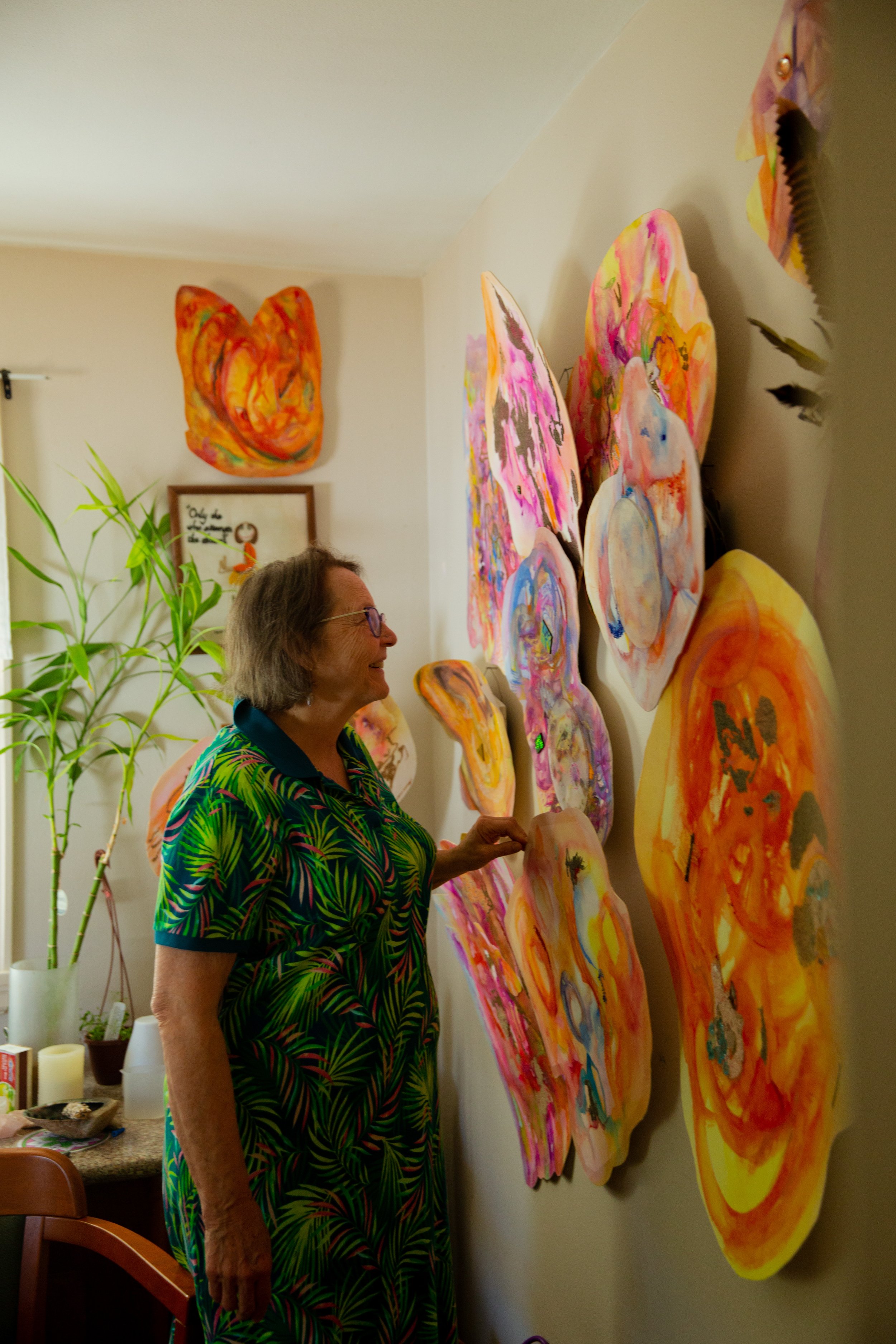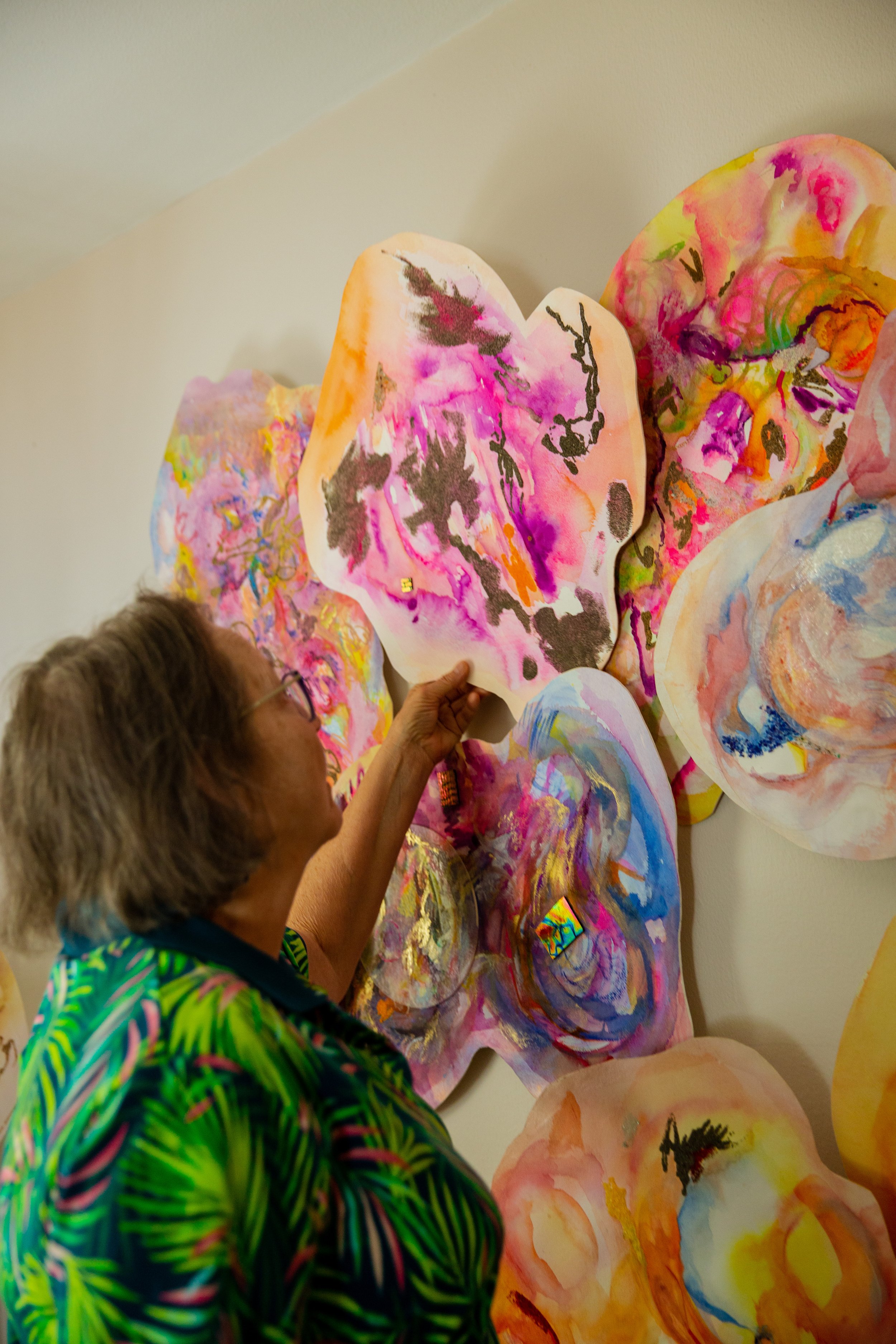Interview
Anne Marie McNamara
Anne Marie McNamara is a self-taught mixed media artist, an intuitive energy worker and an author. She grew up in Tacoma, Washington, and moved to Seattle to attend the University of Washington. She studied cultural anthropology and learned that there are many ways to see something. This concept was reinforced by a childhood memory of drawing with a crayon on a blank page in her baby book.
Years later, Anne Marie opened the book and saw the pink crayon line, and the pink crayon picture moment came back into her conscious mind. She remembered when she had added the pink crayon mark that it had became one with the white background, not two separate colors. Now, she saw the two different features of this page—a pink crayon line on a simple white page of the book. How the brain works visually, became very interesting to her.
Image courtesy of Tara Kelly
Another aspect of her creative life is providing Energetic Space Clearing to change energy in troubled properties including using Feng Shui techniques. She has written a book called Earth Whisperer, The White Chick from Tacoma. It was her way of stating that energetic intuitive people are all around us and does not have to be some esoteric exotic path of knowing.
What is your background and how did you start your journey in the art world?
“I would describe myself as an intuitive energy worker. I work with the earth’s and sky's energetic vibration. My art is a reflection of the energetic vibrational concept of Formlessness to Form. I believe this concept is how we all make our own realities as we interact with others. My art allows people to talk about “reality” in a fun manner. I have been a meditator since I was 21 years old. Nature is a short walk away from my art studio, and I thrive with the connection. A huge life influence was connecting with elders. My own parents died in middle age. For over eight years, I taught art to elders at Park Shore Retirement Community. Many of my students were in their nineties, and two were 99 years old! I loved their inspiring can-do attitude, love of nature, and gleaned much from this personal interaction and their wisdom. I was raised in Tacoma, Washington. I moved to Seattle to attend the University of Washington and study anthropology. I returned to Tacoma for a brief period, and attended some art classes at the local community college. I studied Sumi with Fumiko Kimura. Later, my artistic mentor for design was my Seattle neighbor, Steve Fuller, Professor Emeritus at UW. Steve Fuller taught me to turn my art in every direction; design balance in the artwork.”
What inspires you?
“The pure creative act of energy that surrounds us. Nature has also been my teacher with the lush Pacific Northwest view of sky, water and mountains. Another contributing factor was my science classes in botany and geology. Botany taught me to look at the detailed shapes of nature, and geology taught me the immensity of the earth’s diversity and history. Working as a juvenile probation officer for ten years taught me we all have a story. Several years ago, I began to develop the idea of an artwork being easily turned on a wall for different views. I coined the word Turn Art™. I developed this concept because interactive art, and visual variety is my happy place. I work in a variety of shape formats, squares, rectangles, and curves. As a mixed media artist, I start the process by painting in either watercolor, acrylic or both. After the initial start, I add different elements, such as sand, glass pieces and organic items, such as tree bark.”
What themes do you pursue? Is there an underlying message in your work?
“The foundation of my visual artwork is rooted in my spirituality and my meditation practice. The underlying themes are about emotions, all kinds of emotions and a continuum of thoughts rather than a dual binary reality. We all really know life is not just two aspects. I live my life as a full bouquet of flowers and yes, some flowers have thorns. Playfulness and balance are foremost in my mind as I create. I want to encourage people especially adults to play more with their creativity and to play nicely with others with their creativity. We can learn a lot from children.”
“I began to develop the idea of an artwork being easily turned on a wall for different views.”
How would you describe your work?
“My interactive artwork is mostly very colorful and evokes some type of feeling. I love color and I am particularly interested in the vibration of color! Color vibration influences how our bodies interacts with our environment. Of course, this is the simplistic way of talking about energetic vibration, Other factors come into being such as the earth’s or a building’s vibrations or even a living creatures’ vibration. My educational background in the study of Feng Shui vibrational systems has influenced my attitudes and it is reflected visually in my work. If I had one way to describe my work I would say it is bold because I am almost insisting people play while in the art gallery.”
Which artists influence you most?
“As a teenager, I was deeply influenced by Marc Chagall, Piet Mondrian, Paul Klee, Wassily Kandinsky and Mary Cassatt. In my early twenties, I attended a couple classes learning the Japanese Sumi style of art and was inspired by the simplistic fluidity. Marc Chagall has continued to be an influence, as well as Mexican and African artists’ color palettes. My biggest influencer was my neighbor, Steve Fuller, an artist and a retired art teacher from the University of Washington. His wife, Judy Fuller, told me that during an honorary dinner for Dale Chihuly, the world famous glass artist, he mentioned Steve as an important influence in his artistic direction.”
What is your creative process like?
“My creative process is the sum of all parts of me. Ideally, I start with some simple breaths to ground myself. If I am feeling particularly off-center, I meditate for 2-15 minutes, and if my mind is a monkey mind I pray the rosary. I was raised Irish-Catholic so that is my ingrained meditative prayer method.
The nitty-gritty painting process has many steps. Working, and turning the art to create the desire balance effect. After the initial painting is completed, I add elements such as glass frits, dichroic glass, different colors of sands from all over the world, and other organic bits here and there. My first addition of sand was caused by the wind. I was doing Plein Air with my friend and the wind blew sand all over my watercolor painting. I like the effect and started gluing it to add another dimension to my artwork. Later I dated a glass artist and he encouraged me to add glass to my art for another effect.
There is also the practical mechanical aspect of the work. How do I develop a method for turning the artwork while still on the wall and be a friend to the user? This creative process is definitely still being developed, especially for the larger artwork. Each work deserves its own solution. Lastly, I sometimes spend months looking at an artwork to nudge the details along. It is important to me to really give the artwork as much of me as I am able. Plus, as I change my artwork changes. My artwork reflects my inner deepest world meeting the outer world. Recently, I am adding another 3-D elements painted wood cubes with magnets to attach to the actual artwork.”
What is an artist’s role in society and how do you see that evolving?
“An artist’s role is to share themselves with the world. Artists are often the creative homilies of society’s surroundings. This creativity can assume many forms and with the more open view of what is truly art creatives can choose to thrive.”
Images courtesy of Tara Kelly
Have you had any noteworthy exhibitions you'd like to share?
“My most impressive exhibition was being part of the SEE|Me Times Square art exhibition. My favorite exhibition is the most recent one, at CoCA Gallery in Seattle. I was volunteering at the gallery and would really encourage patrons to turn the art and enjoy the art. It was fun to see some be timid but as they turned it, they relaxed and really enjoyed the process.”
Article courtesy of Judy Shoaf


